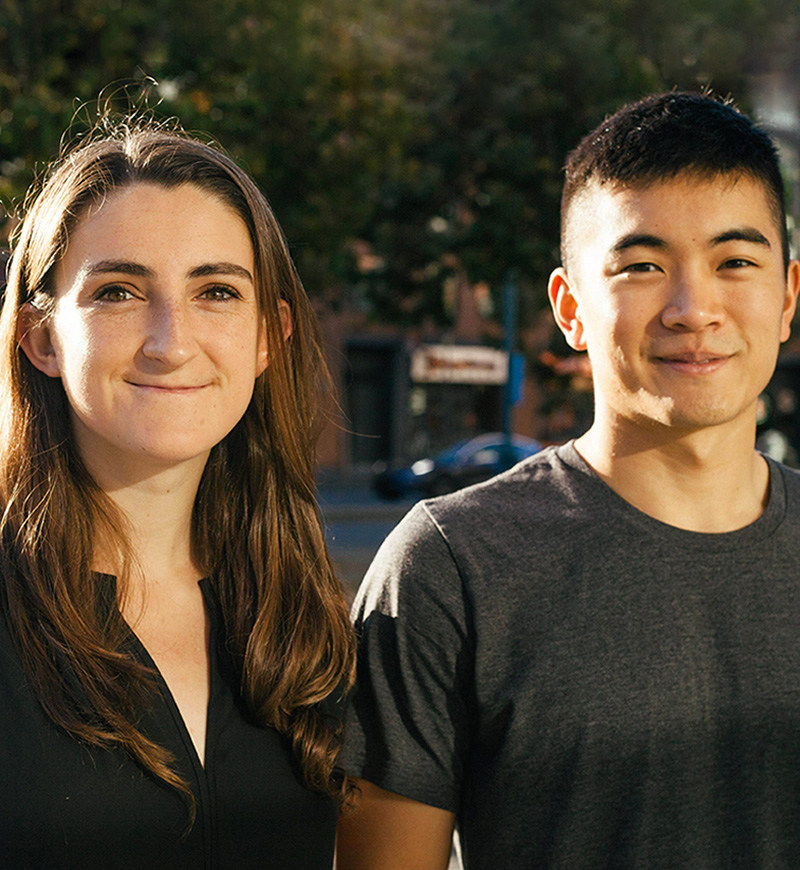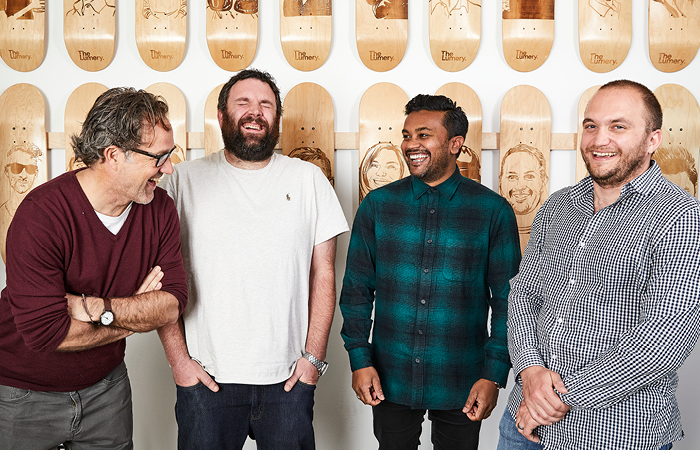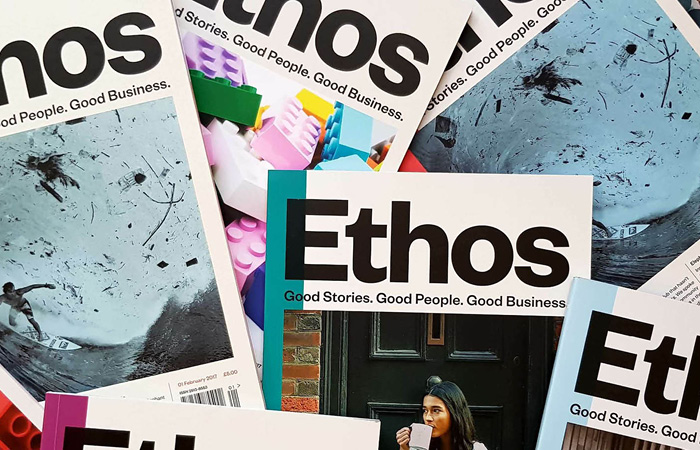ARTICLE / THE MAKING OF... SERIES
The making of...
Kapwing
These days in the tech world, leaving Google, Meta, Apple, Uber, et al to start your own thing seems like your typical start-up story. That’s of course if you're a fan of Product Hunt. But what happens if you’re an Indie Hacker? Then the hype gets tossed aside and reality kicks in… and that’s where we first met Julia Enthoven, Co-Founder of Kapwing.
Series
The making of... Series
Tags
Entrepreneurial
Start up
Welcome to The making of... blog series. To start, can you give us a bit of a background into who you are and where you’ve come from?
Hello, I’m Julia Enthoven, the Co-founder and CEO of Kapwing. I studied computer science at Stanford, then went to work at Google as an Associate Product Manager. At Google, my co-founder Eric Lu and I met while working on Google Identity and then on Image Search. In addition to my passion for consumer tech and product design, I've been involved in education for a while and loved education technology.
EdTech, AgriTech, FoodTech, BioTech, MarTech and MedTech all seem to be getting attention at the moment, so, why did you decide to build a video editor and how did you come up with the concept in the first place?
Eric and I came up with the idea for Kapwing because of our own product pain using existing video editors. We found the incumbent options - iMovie, Adobe Premiere, DaVinci Resolve, etc - slow, hard to learn and not collaborative. At the same time, we saw from our work at Google how much video content was taking off as a medium across social media and internet storytelling platforms. Video has become essential for starting a business, running for office, teaching kids, etc but we found that it was still inaccessible to many. So, our idea from Kapwing came from a desire to build a more modern, more collaborative video editor that was always backed up, enabled you to work with other people from any device plus was much easier and faster to use.

Julia Enthoven and Eric Lu, Co-Founders of Kapwing
There’s nothing like curing a pain point with your own product solution. Knowing you had this problem and with Kapwing as the solution what research did you do to arrive at what you've got now? How did you test your product-market fit?
In the beginning, Eric and I were bootstrapping and living out of our own savings. In the first two months of working together, we launched a website that didn't work called Hot Barber. From that experience, we learned that distribution is also crucial and we needed to launch something that solved an urgent need rather than a ‘nice-to-have’. We discovered the need for a Video Meme Maker when browsing through Google Search queries and realised that there were a lot of people online searching for things like "Trim Video", "Resize Video," etc without many solid websites out there that served these needs. So, we did a bit of research on search queries and searchers' intent before starting to build. But overall, this phase was very short and we had the first version of the website up within three weeks.
That’s the great thing about tech, right? You can create something pretty fast, and test it with the market as you go. Having said that, what were the first iterations of your product like?
We launched a simple website that just did one video editing format: adding text above a video, image, or GIF layer. This "video meme maker" got traction quickly on Google Search and we were able to charge a few dollars from people to remove the Kapwing watermark from the bottom corner. After that, we built 12 different one-off tools that just did a single function: trim, add music, add subtitles, etc. As our traffic grew, I talked with our users nearly every day through a live chat box on our website, and we noticed that they were regularly asking for multiple different tools at once. They wanted to add music AND trim, or resize AND add text. This helped us realise that there was a larger problem at play around the accessibility of video creation generally. In 2018, we raised money, hired a few engineers and launched the Studio, a unified video editor that now is our flagship product.
Earlier, you mentioned that you and Eric bootstrapped and then followed up with a bit of a raise in 2018. Can you tell us a little more about your funding journey?
Since we're both software engineers, we were able to build the first version of Kapwing ourselves from scratch. We started making money pretty quickly, within about five weeks of the launch, although in the early days it was a very small revenue stream and not enough to pay our rent with. It grew steadily over nine months. By the summer of 2018, we were able to raise money from Silicon Valley venture capitalists mostly from our own traction (user base and revenue stream). By that time, we had 100,000 people visiting the website every month with no ad spend, which impressed investors even though we had never started a company before. We ended up raising nearly $2M from Kleiner Perkins and other investors.
It’s nice to see something you’ve built get such traction. As you say, although the revenue was low, having 100,000 people validate your product is pretty awesome. With initial funding and the product doing well, can you tell us about your branding process and how you arrived at where you are today?
We started with the name "Kapwing" which is not easy to pronounce or spell. But the domain kapwing.com was available for $10/year, which was important when we were living out of our savings. Many people have told us since then that we should change the name, but there's a lot that I like about it, including that it's unique and sticks out from our competitors. It's also an onomatopoeia and comes from Calvin & Hobbes, one of our favourite comics.
Although we decided to keep the name, we knew that we needed to refresh our logo, colour scheme and visual identity to reflect how much our business and product had matured in the last four years. So, this year, in 2022, we hired a brand designer named Em and revamped our website and brand. It has helped us achieve more brand recognition and improved our consistency across surfaces.
We definitely agree with you on having a unique name, especially when you’ve got to find a URL with a dot com. With the revamped brand, how are you getting the word out there? How are you scaling the Kapwing brand?
Since our seed fundraising round, we've grown 30x by listening to our users and nurturing a community whilst investing heavily in SEO and content marketing. We've grown a YouTube channel to nearly 200k subscribers and have an organic presence on TikTok, Instagram and Twitter. By growing our user base and product in parallel, we've been able to learn about new trends in digital media and help creators navigate the changing landscape, achieving product market fit in a crowded category.
“Listening to users” is super valuable advice. Often we get so caught up in the day-to-day when in reality we’ve got to pause and listen to customers. And what about future challenges? What's the biggest challenge or challenges you think you'll face moving forward?
We're moving our business model towards creative businesses and organisations who want to empower their people with great creative tools. Serving and selling to the enterprise buyer is very different from building a great product for the end user (a creator), so it's still a challenge. We're in the early stage of this new business model and in some ways, it's a return to the early days of Kapwing when we tried a lot that didn't scale.
More great advice. Typically, people don’t think about changing business models or iterating after they’re established - which unfortunately can limit their opportunity for growth and scale. Knowing what you know now, what advice would you give another entrepreneur who is embarking on their own startup journey?
Your idea only dies if you give up! Also, remember to invest in your mental health, because the ups and downs are not easy.


